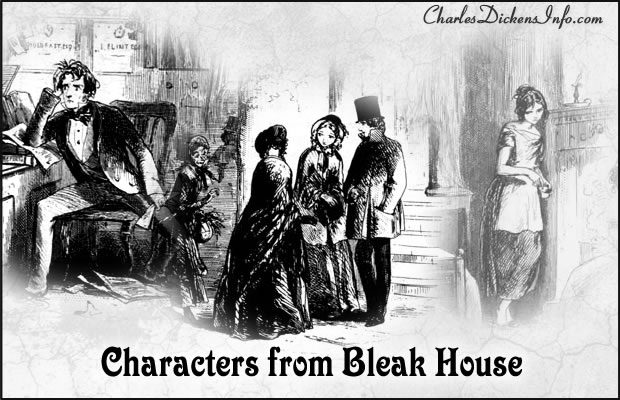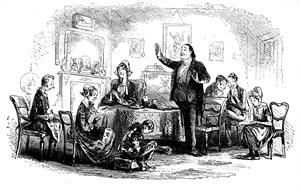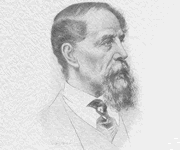Bleak House dramatizes the flaws in the British Court of Chancery. The novel also has the odd distinction of being among the few classic works of literature to feature a character who dies by spontaneous combustion.
Bleak House by Charles Dickens
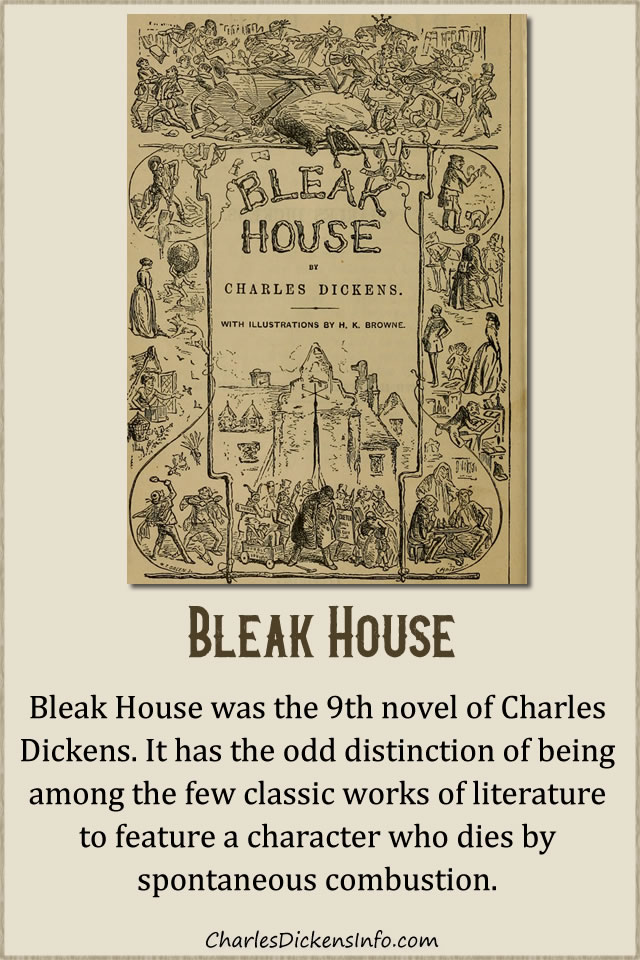
Last Updated September 19, 2025 – Originally Published July 5, 2012
Bleak House was the 9th novel of Charles Dickens. The novel was first published in installments from March 1852 through September 1853. It was issued as one volume in 1853.
The illustrator was Hablot Knight Browne. However, Browne was better known by his pen name, Phiz.
Table of Contents
Dickens’s Life at The Time
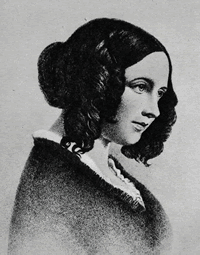
Catherine (Hogarth) Dickens
In 1851 Catherine Dickens, Charles Dickens’s wife, suffered a nervous collapse. Later Dora Dickens, the youngest daughter of Charles and Catherine, died when she was only eight months old. The father of Charles Dickens also died in 1851.
The publication of Bleak House began in 1852. That year also saw the birth of the youngest child of Charles Dickens, Edward known as “Plorn”.
In 1853 George Lewes complained about the manner of death for a Bleak House character, spontaneous combustion.
Bleak House Working Titles
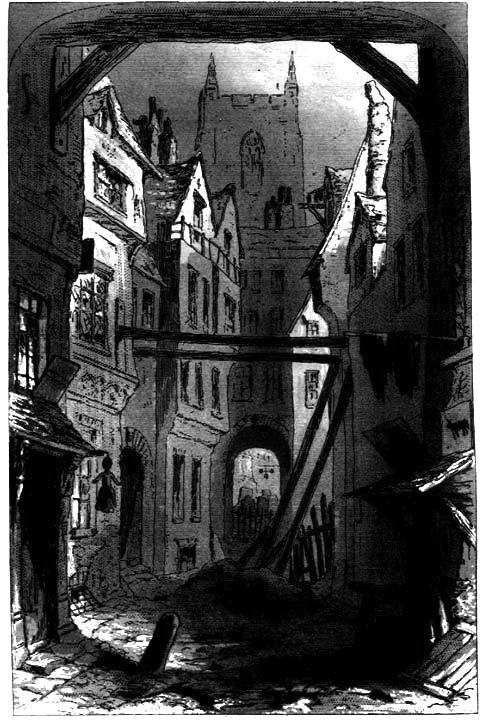
Jo lives—that is to say, Jo has not yet died—in a ruinous place known to the like of him by the name of Tom-all-Alone’s. It is a black, dilapidated street, avoided by all decent people, where the crazy houses were seized upon, when their decay was far advanced. ~ Bleak House by Charles Dickens
Bleak House had several working titles. Some of these included:
- East Wind
- Tom-All-Alone’s
- Bleak House and the East Wind
- The Solitary House that was Always Shut Up
Inspiration for Detective Bucket
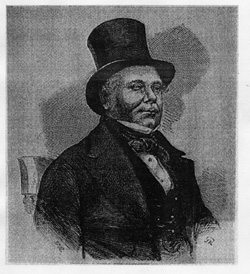
Charles Frederick Field – 1855 engraving
Detective Inspector Charles Frederick Field (1805 – 1874) of Scotland Yard is thought to be the inspiration for Inspector Bucket in Bleak House.
Dickens was interested in police work and wrote about Field in Household Words.
Inspector Field is, to-night, the guardian genius of the British Museum. He is bringing his shrewd eye to bear on every corner of its solitary galleries, before he reports ‘all right.’ Suspicious of the Elgin marbles, and not to be done by cat-faced Egyptian giants with their hands upon their knees, Inspector Field, sagacious, vigilant, lamp in hand, throwing monstrous shadows on the walls and ceilings, passes through the spacious rooms. ~ On Duty with Inspector Field by Charles Dickens, Household Words published June 14, 1851
Spontaneous Combustion
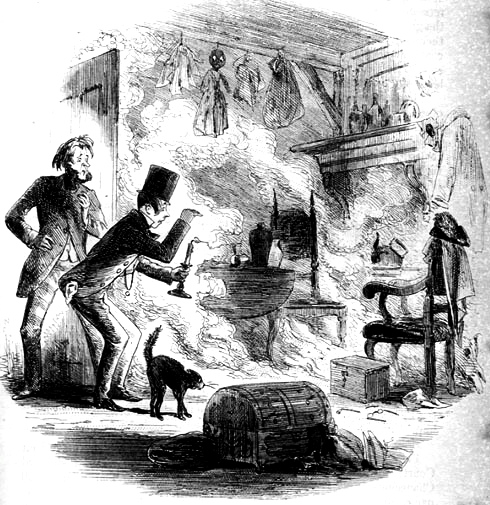
Here is a small burnt patch of flooring; here is the tinder from a little bundle of burnt paper, but not so light as usual, seeming to be steeped in something; and here is—is it the cinder of a small charred and broken log of wood sprinkled with white ashes, or is it coal? Oh, horror, he IS here! And this from which we run away, striking out the light and overturning one another into the street, is all that represents him. ~ Bleak House by Charles Dickens
In Bleak House a character dies via an unusual method — spontaneous human combustion or SHC. The unfortunate character to meet this fate is Krook, the brother of Mrs. Smallweed.
George Henry Lewes, a writer for the Leader, complained in his February 1853 column that people just didn’t suddenly burst into flame. Dickens responded by writing a coroner’s inquest into the next segment of Bleak House.
In the book, Krook’s death was investigated and authorities on spontaneous combustion were cited to prove that the phenomena really did exist.
Spontaneous combustion was a good literary device to demonstrate that passionate forces can lie within us. However, despite the fact that a Bleak House inquest “proved” that people can spontaneously combust, this idea is not taken seriously today.
SHC is featured in other works of literature, although non are quite as well known as the Bleak House incident. Wieland: or, The Transformation: An American Tale by Charles Brockden Brown contains a scene in which the family patriarch dies from spontaneous human combustion while praying. In Herman Melville’s, Redburn, a sailor is consumed by “animal combustion” while in a drunken stupor.
Theme of Bleak House
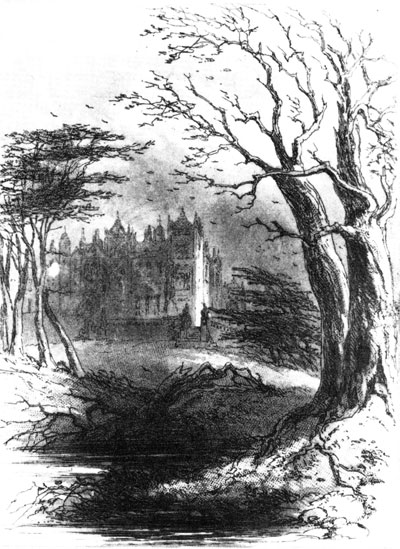
Bleak House, Illustration by Phiz
Bleak House dramatizes the flaws in the British Court of Chancery.
In Dickens’s time, there were two main types of courts. Courts of Common Law dealt with crimes like murder or theft wherein someone was accused and tried. The outcome of the trial was based on principles of common law.
The other court system was the Court of Chancery.
The Chancery handled items like property disputes. Each case was to be decided on the principles of Equity. In other words, each case was to be considered on its own merits. This was thought to be an improvement over trying this type of case in the Courts of Common Law.
However, the Chancery became as bad as the system it replaced. The Chancery was commonly looked upon as an ineffective, expensive and technically difficult system.
The litigants were charged fees at every step of the legal process. These fees went directly to the court officials.
More steps in the justice process meant that there would be more opportunities to collect fees. As a result, the system became a bureaucratic nightmare.
Sometimes it took years for cases to even come to trial. From that point, it could be years before a decision on the case was reached. In the preface of a non-serialized volume of Bleak House Dickens writes:
At the present moment (August, 1853) there is a suit before the court which was commenced nearly twenty years ago, in which from thirty to forty counsel have been known to appear at one time, in which costs have been incurred to the amount of seventy thousand pounds, which is A FRIENDLY SUIT, and which is (I am assured) no nearer to its termination now than when it was begun.
Dickens was very familiar with the court system from this time spent as a law clerk.
He also had a bad experience with the court in 1844. Dickens brought a case to Chancery that dealt with the copyright to A Christmas Carol. Dickens did win the case, however, his opponents declared bankruptcy.
Instead of collecting damages Dickens found himself paying court costs — on the case that he won.
More About Bleak House
Collection of Quotations from Bleak House
We hope you enjoy this collection of 31 quotes from Bleak House.


